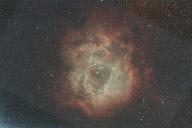Howdy, Stranger!
It looks like you're new here. If you want to get involved, click one of these buttons!
Post WBPP Master Image Contains Frame Edges of Integrating Multi Session Images from Alignment
I have been wrestling with an issue that I have not been able to find a resolution/explanation in the multiple forums and have not come across in Adam's tutorials. The problem is of frame borders appearing in final integrated image of the Rosette of two sessions. First session is 60s at 150 gain and 2nd session is 120s at 150 gain. Each session has its own flats. The darks are from a library of 60s and 120s respectively. Bias files are also from a library common for both sets of darks all at 150 gain. Used keyword grouping for pre-calibration into one image. The two sets are integrated and the Rosette itself looks good as well as the stars. However, there appears to be straight lines at 45 deg angle running through the upper left and lower right of the Rosette with perpendicular lines on the other sides of the Rosette forming a rectangle. I believe it is the frame from the 120 sec set of images.
I cannot ascertain the cause of this nor how to mitigate. I have tried a few post processing techniques, albeit not thorough as I am still a newbie.
Attached a jpeg....I hope it shows. Any advise?


masterLight_BIN-1_6248x4176_EXPOSURE-120.00s_FILTER-NoFilter_RGB.jpg
6248 x 4176 - 5M


Comments